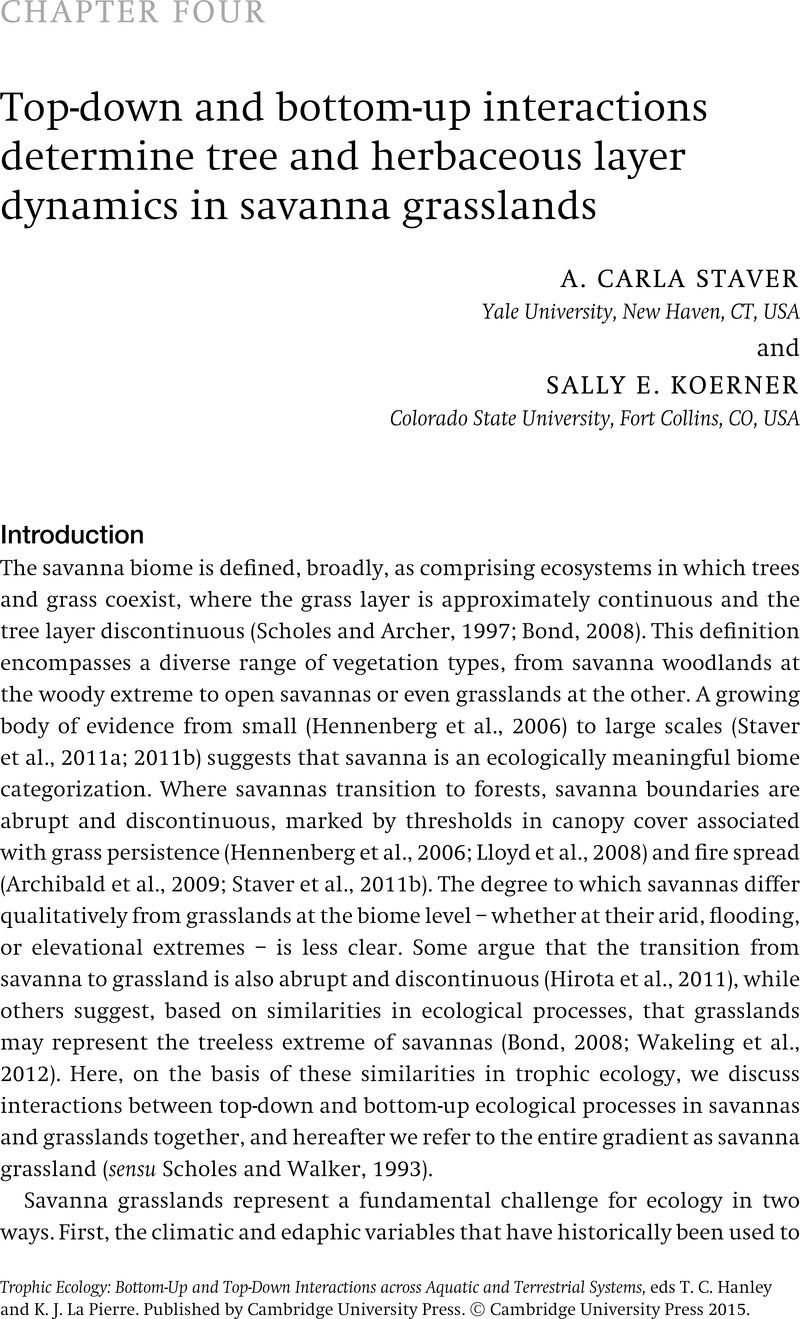Book contents
- Frontmatter
- Contents
- List of contributors
- Preface
- Part I Theory
- Part II Ecosystems
- 2 The spatio-temporal dynamics of trophic control in large marine ecosystems
- 3 Top-down and bottom-up interactions in freshwater ecosystems: emerging complexities
- 4 Top-down and bottom-up interactions determine tree and herbaceous layer dynamics in savanna grasslands
- 5 Bottom-up and top-down forces shaping wooded ecosystems: lessons from a cross-biome comparison
- 6 Dynamic systems of exchange link trophic dynamics in freshwater and terrestrial food webs
- 7 Bottom-up and top-down interactions in coastal interface systems
- Part III Patterns and Processes
- Index
- References
4 - Top-down and bottom-up interactions determine tree and herbaceous layer dynamics in savanna grasslands
from Part II - Ecosystems
Published online by Cambridge University Press: 05 May 2015
- Frontmatter
- Contents
- List of contributors
- Preface
- Part I Theory
- Part II Ecosystems
- 2 The spatio-temporal dynamics of trophic control in large marine ecosystems
- 3 Top-down and bottom-up interactions in freshwater ecosystems: emerging complexities
- 4 Top-down and bottom-up interactions determine tree and herbaceous layer dynamics in savanna grasslands
- 5 Bottom-up and top-down forces shaping wooded ecosystems: lessons from a cross-biome comparison
- 6 Dynamic systems of exchange link trophic dynamics in freshwater and terrestrial food webs
- 7 Bottom-up and top-down interactions in coastal interface systems
- Part III Patterns and Processes
- Index
- References
Summary

- Type
- Chapter
- Information
- Trophic EcologyBottom-up and Top-down Interactions across Aquatic and Terrestrial Systems, pp. 86 - 106Publisher: Cambridge University PressPrint publication year: 2015
References
- 2
- Cited by

